2025 Yamaha Wolverine RMAX4 Buyer’s Guide
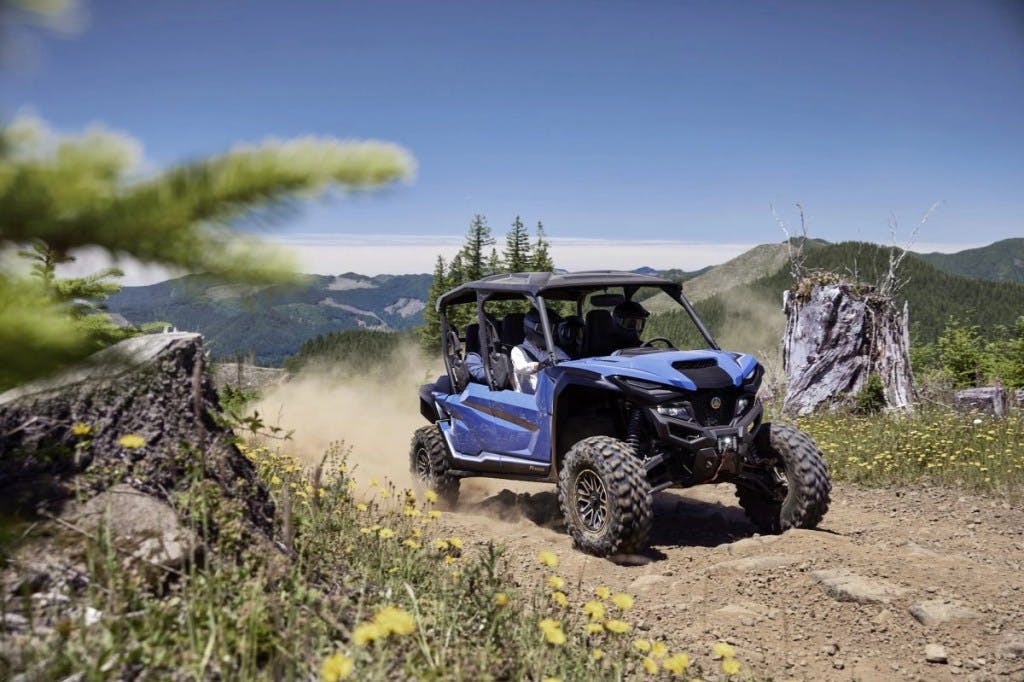
$27,999 MSRP
• for work and play
• Now with four seats
• quality in every feature
The Perfect Rec-Ute
The Yamaha RMAX is the envy of the rec-ute segment. It outperforms a few pure-sport rigs, and it can haul a load in the bed while doing it. It’s the blueprint for what a rec-ute should be, but it had an issue: there was no dedicated four-seat model.
Other rec-utes like the Polaris General and the Can-Am Commander have four-seat options, but the RMAX utilized a design that all but eliminated the bed to fit a back row. Last year, Yamaha renamed that design to the RMAX4 Compact, and introduced the RMAX4, a true two-row, four seat rec-ute.
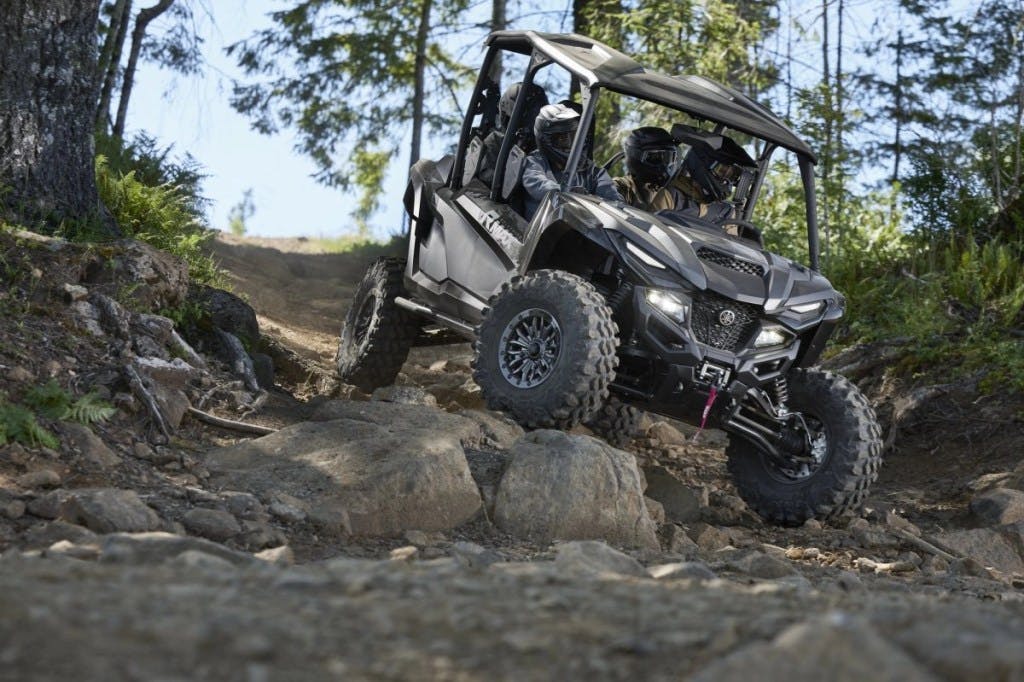
Now, there’s not much holding the RMAX back. Take your family to the trail on the weekends and take it home to work for you through the week. It just makes sense, and there’s not a ton out there that rivals it.
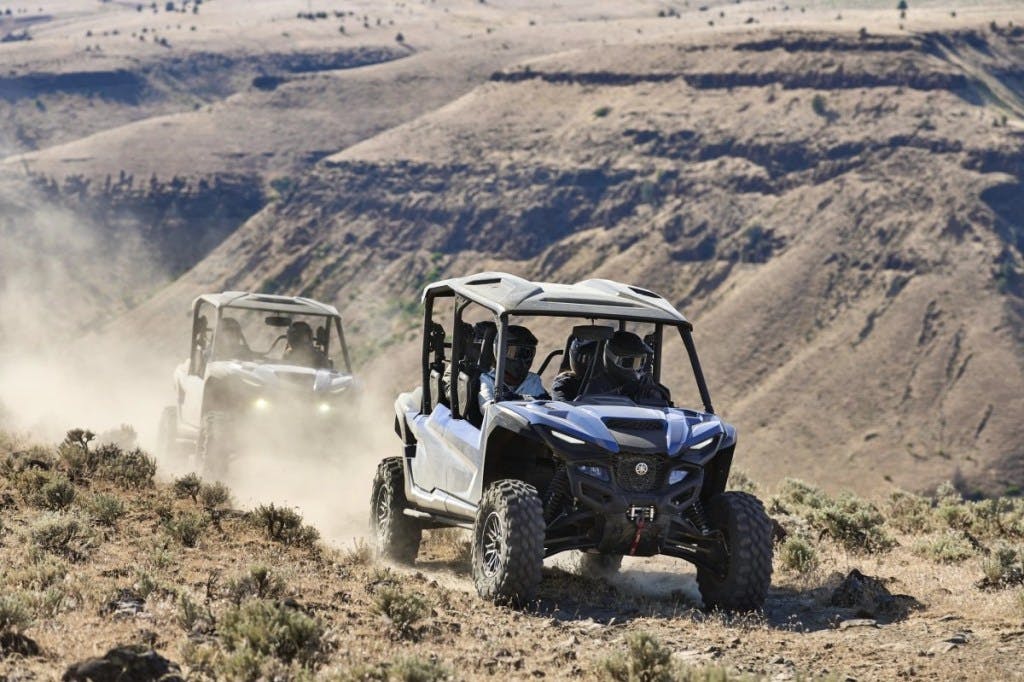
How much power does it make?
That’s. a tough one to answer, as Yamaha doesn’t give away actual power numbers. “Thrilling power” is all we get. But we do know that it has an electronically-limited top speed of 73 mph. That’s blazing fast for a side-by-side, especially a rec-ute. I don’t know about you, but I don’t usually get around the farm at highway speeds.
It gets to that speed thanks to a 999cc DOHC twin. That engine sends power through an Ultramatic CVT with 2WD, 4WD, full diff-lock 4WD, and turf mode.
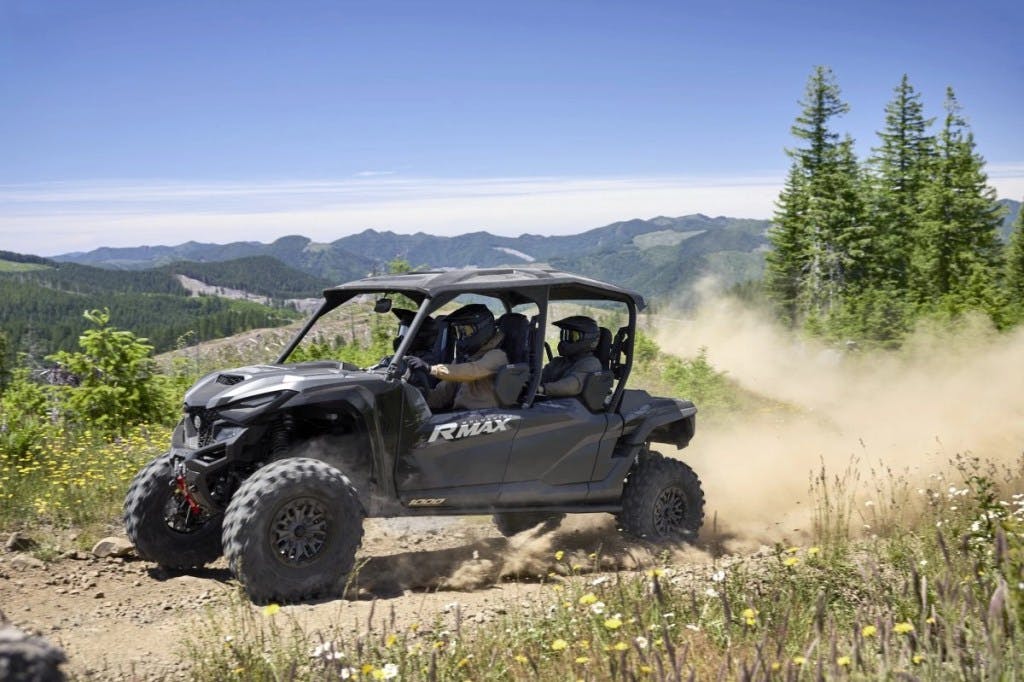
What makes it special?
The RMAX4 comes ready-to-rip from the factory. Fox QS3s and 30-inch Maxxis Carnivore tires wrapped around beadlock wheels give the RMAX up to 16.9 inches of travel. Add on that killer engine that we mentioned earlier, and you have a near-perfect rig that needs nothing.
The RMAX4 is one of the most reliable side-by-sides on the market. So reliable, in fact, that Yamaha sends them to the dealer with a 10-year belt warranty. That’s possible thanks to its Ultramatic transmission, which features an automatic centrifugal clutch that maintains constant tension on the belt to avoid extra wear and tear.
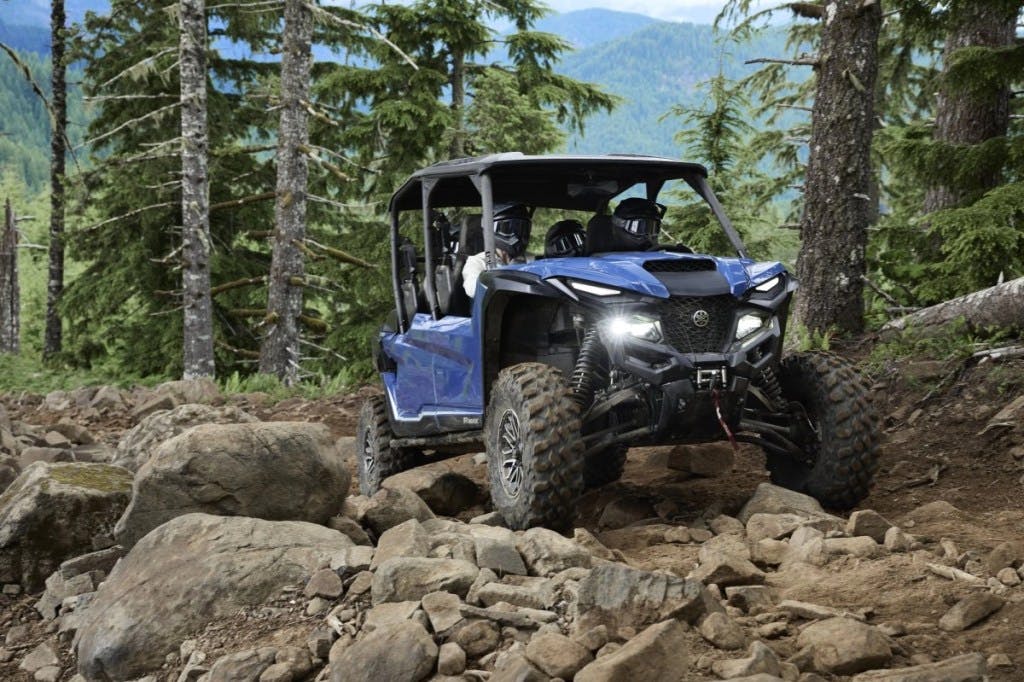
Why do I want it?
Take the RMAX4’s spec sheet and throw a dart at it, there’s a reason to want it.
Jokes aside, it’s hard to find much wrong with the RMAX4. The extra wheelbase makes it a bit less maneuverable on the trail than the two-seater, but that’s a given. Add on its impressive features, the 10-year belt warranty, and all of the love and care that the engineers put in to this rig, and it’s hard to beat.
If you think we’re just yanking your chain about the engineers caring, they made a point to improve the soft-touch points on the RMAX4 after complaints that they’re uncomfortable. If they care that much about how comfortable your knee is in the cockpit, imagine what went into the rest of the rig.
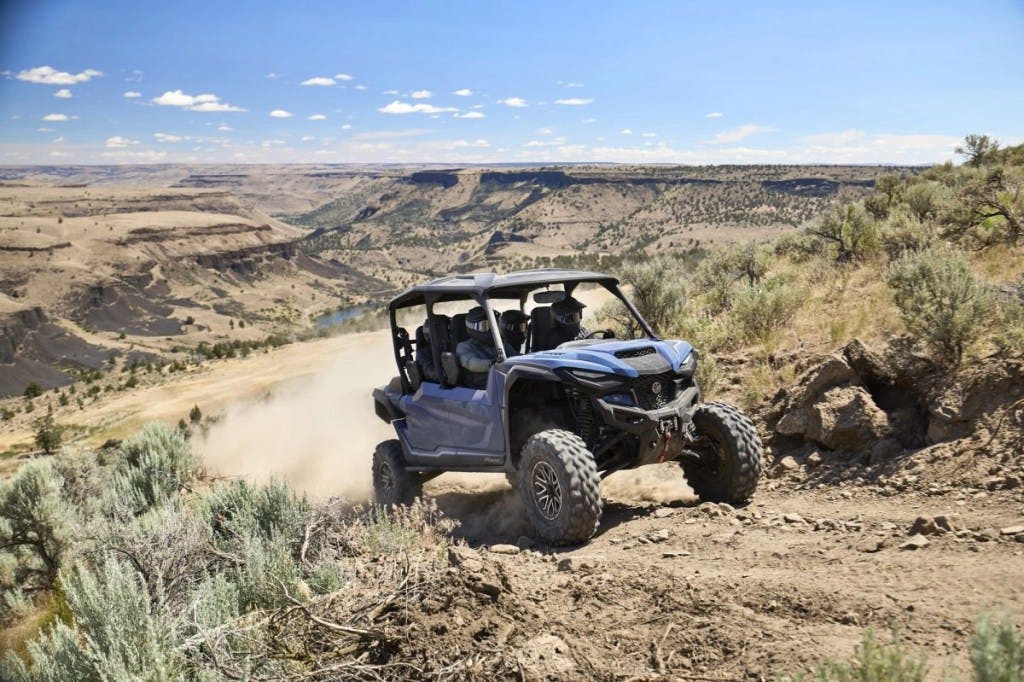
Why don’t I want it?
The original RMAX debuted in 2021, and not much has changed about it since. While the RMAX4 came out this year, it still shares all the design elements of the two-seater. Some of that can feel outdated, and rigs like the Polaris Xpedition feel a bit more modern.
If you want something that’s flashy and gets all the hell yeahs, maybe look elsewhere. The RMAX4, while certainly sleek and attractive, still looks like a rec-ute. It won’t stand out and won’t make heads turn.
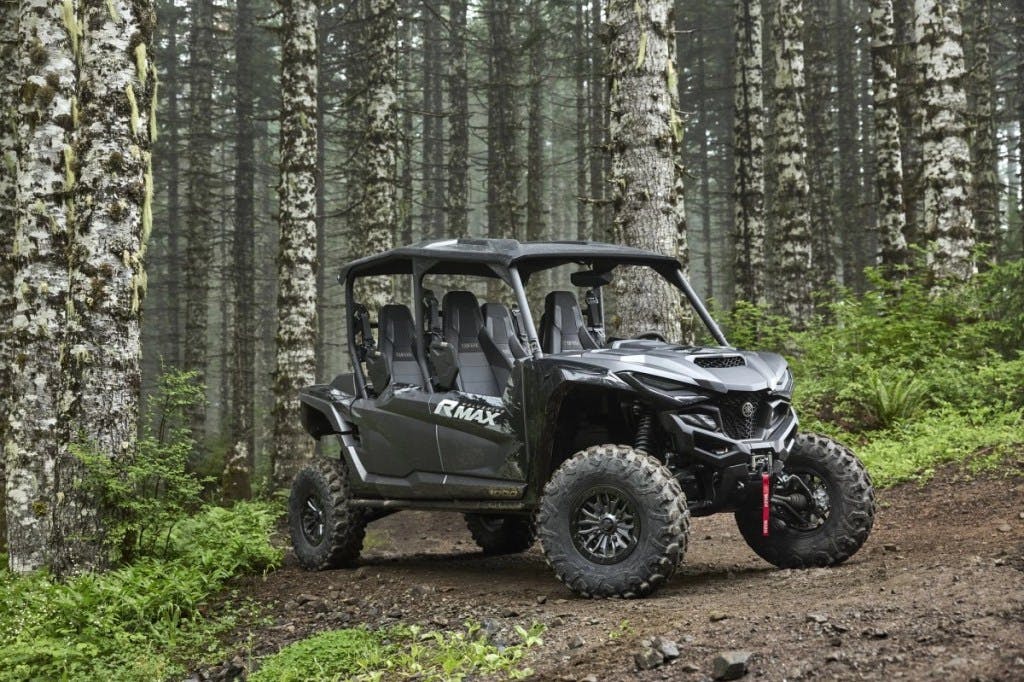
What trim do I want?
The RMAX4 offers two trims, the Limited and the XT-R. To make it easy, there’s really only two differences: the wheels and the suspension.
The Limited gets Fox iQS electronic suspension while the XT-R sticks to manual-adjustment Fox QS3s. While both shocks are excellent, the Limited allows you to adjust your suspension on-the-fly. That elements the constant stopping and starting to change suspension settings.
To make up for the lack of electronic suspension, the XT-R package is the only trim with beadlock wheels. The Limited comes in at $29,199 and the XT-R at $27,999.
If it were our rig, we’d save the $1,200 and go with the XT-R. The beadlocks make up for it alone, and electronic suspension is a luxury, not a necessity. While stopping every time you want to change your suspension can be annoying, we don’t think its worth a $1,200 markup.
If I like this… what else should I look at?
If you like this rig but don’t need the extra space, check out the RMAX2 or RMAX4 Compact. Want a smaller, cheaper package? The Yamaha Wolverine X2 is calling your name. If you’re just shopping around for rec-ute rigs, the Polaris Xpedition, Polaris General, and Can-Am Commander are all great options.
2025 Yamaha Wolverine RMAX4 Specs
Length: 150.8 in.
Width: 66.7 in.
Height: 82.7 in.
Wheelbase: 118.1 in.
Claimed Dry Weight: 2,304 lbs
Engine: parallel-twin
Displacement: 999cc
Transmission: Ultramatic V-belt with all-wheel engine braking CVT
Claimed Power: N/A
Claimed Torque: N/A
Fuel System: Yamaha Fuel Injection (YFI)
Steering: EPS
Drivetrain: 2WD, 4WD, full diff-lock 4WD
Front Suspension: Independent double wishbone with anti-sway bar, Fox iQS piggyback shocks; 14.2-in travel
Rear Suspension: Independent double wishbone with anti-sway bar, Fox iQS piggyback shocks; 16.9-in travel
Front Brakes: Dual hydraulic discs
Rear Brakes: Dual hydraulic discs
Wheels F/R: 14 in. aluminum
Tires F/R: 30 x 10.00R-14 Maxxis Carnivore
Bed Capacity: 600 lbs
Towing Capacity: 2,000 lbs.
Seating Capacity: 4
Ground Clearance: 13.8 in.
Fuel Capacity: 9.2 gal
